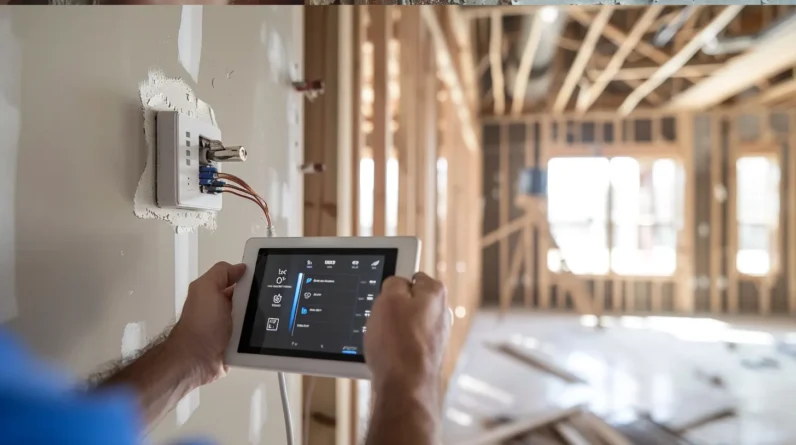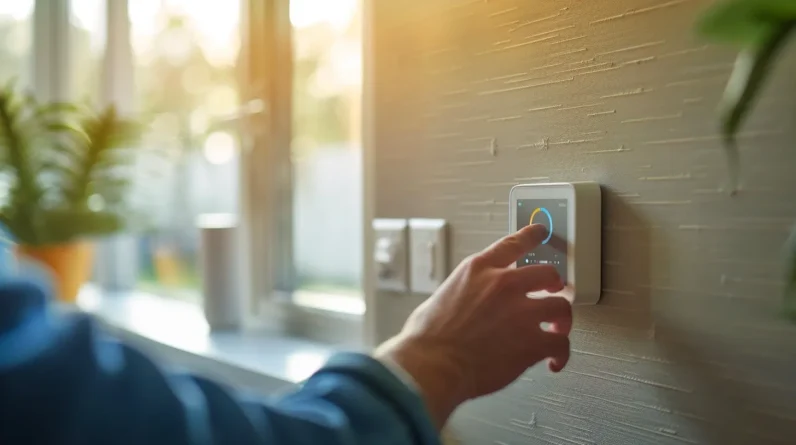
To minimize the health risks associated with prolonged smart device use, we must take proactive steps. We can reduce eye strain by adjusting display settings, following the 20-20-20 rule, and using good room lighting. Maintaining good posture habits, such as sitting with our feet flat on the floor, back straight, and shoulders relaxed, also helps prevent discomfort and long-term damage. Taking regular breaks to stretch or move can reduce sedentary behavior risks, while setting screen-free zones and tracking screen time can help mitigate mental health concerns. By implementing these strategies, we can uncover more ways to guarantee healthy smart device habits.
Minimizing Eye Strain Effects
Most of us spend several hours a day staring at smart device screens, and this prolonged exposure can lead to eye strain. To minimize its effects, we can adjust the display settings on our devices. Lowering the screen’s brightness and adjusting the color temperature to reduce blue light emission can help alleviate eye fatigue. We should also follow the 20-20-20 rule: every 20 minutes, look away from the screen and focus on something 20 feet away for 20 seconds. This helps reduce the eye’s focusing effort.
Using good lighting in the room, avoiding glare, and blinking regularly can also help reduce eye strain caused by smart device use.
Maintaining Good Posture Habits
When using smart devices, we often overlook the impact of our posture on our overall well-being. Maintaining good posture habits is essential to prevent discomfort, fatigue, and long-term musculoskeletal damage. To achieve ideal posture, we should sit with our feet flat on the floor or a footrest, keeping our knees at or below hip level. Our backs should be straight or slightly arched, with our shoulders relaxed and down. The smart device should be positioned directly in front of us, at a comfortable distance and height, allowing us to gaze slightly downward.
Being mindful of our posture, we can reduce the risk of developing neck, back, and shoulder strain associated with prolonged smart device use. Regular stretching and strengthening exercises can also help maintain good posture.
Reducing Sedentary Behavior Risks
Prolonged smart device use often leads to extended periods of inactivity, contributing to sedentary behavior risks. We can minimize these risks by incorporating regular physical activity into our daily routines. This can be achieved by taking short breaks to stretch or move around every 30-60 minutes. We can also use fitness tracking features or mobile apps that remind us to engage in physical activity throughout the day.
We can use smart devices to facilitate physical activity, such as following exercise videos or tracking our progress. By being mindful of our physical activity levels and taking proactive steps to stay active, we can reduce the risks associated with sedentary behavior and maintain overall health. Regular physical activity can help mitigate the negative effects of prolonged smart device use.
Limiting Mental Health Impacts
Excessive smart device use can strain our mental well-being, and it’s essential we take proactive steps to mitigate its negative impacts. Prolonged exposure to screens can lead to increased stress levels, anxiety, and decreased attention span. To minimize these effects, we should adopt strategies that promote mental balance.
– Set screen-free zones in our homes and maintain them consistently
– Establish device-free times, such as during meals or an hour before bedtime
– Engage in regular physical activity to reduce stress and anxiety
– Prioritize face-to-face interactions and social connections
– Use built-in features like screen time tracking and app blockers to monitor and limit our device use
Conclusion
As we’re glued to our smart devices, it’s ironic that the tools designed to make our lives easier can also lead to physical and mental strain. We’re constantly reminded to ‘look up’ from our screens, yet we find ourselves scrolling mindlessly. By incorporating simple habits like eye checks, posture adjustments, and regular breaks, we can minimize the risks associated with prolonged smart device use and truly make our lives easier and healthier.







